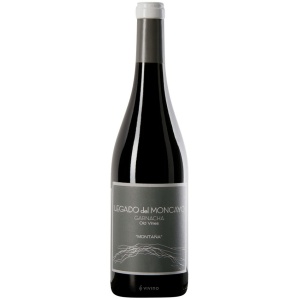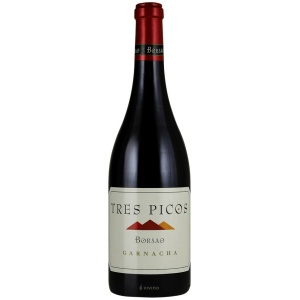Garnacha or Grenache is one of the most common red wines in the world. It ripens late, so it needs warm and dry conditions, as in Spain, where grapes are likely to be born. Garnacha wine plays a starring role in the growth of many incredible wines from around the world. It dominates the Château de Chateauneuf-du-Pape in the south of the Rhône and is also the powerhouse of the legendary Spanish Priorat. These wines often bring high prices, high scores and incredible durability. So how come the same bottled grapes in Spain are worth the price of a sandwich and seem to be largely ignored by the general public?
Grenache Red Wine Profile
MAJOR REGIONS: About 456,000 acres worldwide
France (~250,000 acres) Rhône, Châteauneuf-du-Pape
Spain (~170,000 acres) Priorat, Calatayud
Italy (~55,300 acres) Sardinia, Sicily, Calabria
United States (~10,000 acres) California, Washington
Australia (~8,000 acres) South Australia
Grenache Characteristics
FRUIT: Strawberry, Black Cherry, Raspberry
OTHER: Anise, Tobacco, Citrus Rind, Cinnamon
OAK: Yes. Usually Medium Oak Aging
TANNIN: Medium
ACIDITY: Medium
ABV: Medium-plus alcohol (13.5-16%)
Would you be surprised that Garnacha is responsible for producing one of the most delicious and expensive wines in the world? From majestic regions like Chateauneuf-du-Pape to iconic Californian wines, the Garnacha is as important in the world of wine as Cabernet Sauvignon.

What is Garnacha?
Just 20 years ago, Garnacha was one of the most common grape varieties in the world. It is still preserved in the vineyards today, but other varieties such as Cabernet, Chardonnay and Merlot have exceeded it in hectares. Garnachaa is best suited for rocky and ruthless terrains such as those found in the steep hills of the Priory and South Rhone. Most likely, Garnacha came from Spain, where it is called Garnacia (although in the rest of the world it is called Grenache), but it could also have appeared on the Italian island of Sardinia. It was one of the first grapes brought to Australia, where it became very popular in the 18th century. Grenache is still very popular in Australia. It is also grown in the colder climate of Washington, which is interesting as it usually thrives in warmer areas.
Whether the climate is hot or cold, Grenache takes a long time to ripen, although it is not a spicy grape. The high alcohol content of the resulting wines makes Grenache suitable for Port wine. Grapes take longer to grow than most, leading to a recent decline in popularity as wineries continue to mechanise the harvest.
The pomegranate ripens slowly, needs long and warm conditions to reach maturity and by this time the sugar level is increasing, which in turn brings high levels of alcohol and low acidity. Its thin skin gives the final product a minimum amount of tannins and a pomegranate red color. All these factors combine to make you drink when you are young.
What does “Garnacha” mean?
Garnacha is a Spanish name that can refer to it: Garnacha, wine from red grapes. Garnacha blanca, white grape wine. Garnacha Tintorera, synonymous with Alicante Boucher.
Borsao Garnacha
This wine shows all Garnacha varieties from Campo de Borja. Coming from small parcels in the vineyards of Tabuenca, Borja and Posuélo, it expresses the Escensão de Borsão. Situated between the Serra de Moncayo and the valley of the river Ebro, this historic region has been producing wine since the end of the 12th century. The continental climate is softened by the cierzo wind, which cools the vineyards during the night. The age of these vines is between 15 and 25 years in stony and mucoused soils with clay and limestone. Red clay mixed with sandstone in Tabuenza, gravel and kecil in Borje and limestone in the vineyards of Pocello.
Like what you are reading? Try these related stories...
Borsao Garnacha wine has a deep ruby color, a great sweet kiss of licorice, kirch liqueur and dark currant, cherry red with purple shades. It has a ripe, fruity nose with floral tones. Medium, refreshing, exuberant and fruity, clean and shiny spicy, with a complex and long lasting aftertaste.
Discover Grenache Wine
Whether the weather is hot or cold, Grenache takes a long time to mature, although it is not a spicy grape. The high alcohol content of the resulting wines makes Grenache suitable for Port wine. Grapes take longer to grow than most, leading to a recent decline in popularity as wineries continue to mechanise the harvest.
As a result, the best samples of Grenache continue to come from France. Its cultivation is most widespread in Languedoc-Roussillon. The best wine comes from the South Rhone, especially Châteaux-du-Pape. Here, Grenache generally makes up most of the blend.
In Spain, ornate grapes are still very much cultivated, although they are not as visible as in Rhône. In blends like the Rioja, it adds a critical and fruity juice to Tempranillo, sometimes with about 40%. Only in the Priory is it respected as a grape variety, while in other parts of the country 100% of Garnacchi wines are mostly table wines. Grapes can also be found in Italy, especially in Sardinia, where they are called Cannonau.
Grenache was brought to Australia in 1832 along with other grape varieties such as Cabernet Sauvignon and became immediately popular. However, in the 20th century, as Cabernet and Syrah became more popular, plantations declined. Recently, the renaissance of Rhone blends has led to an increase in the popularity of this grape. In the United States, Washington has been the most successful, while Chile and Australia are growing crops.

6 amazing facts about Garnacha wine
1. Grenache acreage is being reduced
In the 1970s and 1980s, Grenache plantations around the world were approaching 800,000 hectares; this is the size with the potential to produce up to 2.5 billion bottles of wine a year. The reduction in area is partly due to the recent outflow of low quality wines produced from high yielding grape varieties such as Grenache and Cinzau(l)t.
2. 12,000 acres of Garnacha in China!?
There are rumours that there are almost 12,000 acres of Grenache vineyards in China. China’s wine industry includes 7 growing regions and over 40 local grape varieties that are not known outside China.
3. The most expensive Grenache vineyards
The bottles of Château Rayas and Domaine du Pegau in Châteauneuf-du-Pape cost about $600. In Priory, Clos Erasmus and Alvara Palacio “Ermita Velle Vinyes” are two iconic Spanish granadier wines, which cost around $300. Finally, Sine Qua Non in Santa Barbara has gone up to $500.
4. A dessert wine from Grenache.
Rasto, Maury and Banyuls are fortified dessert wines called “vin doux naturel” from France, produced with Grenache. The production of “vin doux naturel” is similar to Port wine.
5. One winery is responsible for Grenache in the United States.
Since 1989, Tablas Creek has been working with the Chateau de Bocastelle in Chateauneuf-du-Pap to bring grape sticks from the Cote du Rhone to America. The Tablas Creek nursery is almost the only one responsible for American grape plantations like Grenache and Vignier.
6. The secret of Burgundy
The Burgundians are responsible for blending Grenache from the neighbouring Rhône region in the 17th century to improve the taste of their Pinot Noir red wines. Of course, adding wine from another region was not illegal at the time.


















